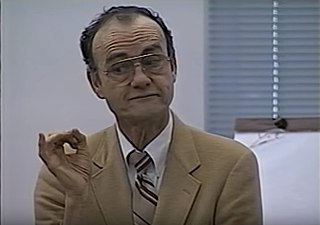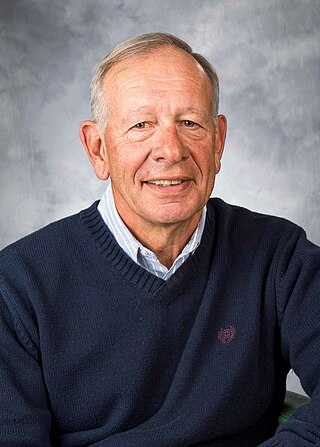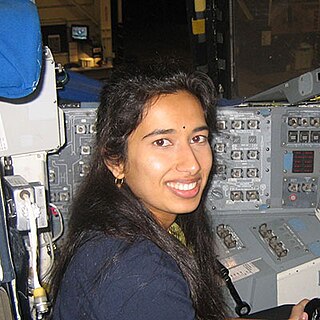
Frederick Phillips Brooks Jr. was an American computer architect, software engineer, and computer scientist, best known for managing the development of IBM's System/360 family of computers and the OS/360 software support package, then later writing candidly about those experiences in his seminal book The Mythical Man-Month.

Safety engineering is an engineering discipline which assures that engineered systems provide acceptable levels of safety. It is strongly related to industrial engineering/systems engineering, and the subset system safety engineering. Safety engineering assures that a life-critical system behaves as needed, even when components fail.
The Therac-25 is a computer-controlled radiation therapy machine produced by Atomic Energy of Canada Limited (AECL) in 1982 after the Therac-6 and Therac-20 units.

Barry William Boehm was an American software engineer, distinguished professor of computer science, industrial and systems engineering; the TRW Professor of Software Engineering; and founding director of the Center for Systems and Software Engineering at the University of Southern California. He was known for his many contributions to the area of software engineering.

The history of software engineering begins around the 1960s. Writing software has evolved into a profession concerned with how best to maximize the quality of software and of how to create it. Quality can refer to how maintainable software is, to its stability, speed, usability, testability, readability, size, cost, security, and number of flaws or "bugs", as well as to less measurable qualities like elegance, conciseness, and customer satisfaction, among many other attributes. How best to create high quality software is a separate and controversial problem covering software design principles, so-called "best practices" for writing code, as well as broader management issues such as optimal team size, process, how best to deliver software on time and as quickly as possible, work-place "culture", hiring practices, and so forth. All this falls under the broad rubric of software engineering.
Nancy Ann Lynch is a computer scientist affiliated with the Massachusetts Institute of Technology. She is the NEC Professor of Software Science and Engineering in the EECS department and heads the "Theory of Distributed Systems" research group at MIT's Computer Science and Artificial Intelligence Laboratory.
Claire Jennifer Tomlin is a British researcher in hybrid systems, distributed and decentralized optimization and control theory and holds the Charles A. Desoer Chair at the University of California, at Berkeley.
A preventive action is a change implemented to address a weakness in a management system that is not yet responsible for causing nonconforming product or service.
Mary Louise "Missy" Cummings is an American academic who is a professor at Duke University and director of Duke's Humans and Autonomy Laboratory. She was one of the United States Navy's first female fighter pilots. In November 2021, Dr. Cummings joined the National Highway Traffic Safety Administration (NHTSA). She currently teaches at George Mason University.

Winston Walker Royce (August 15, 1929 – June 7, 1995) was an American computer scientist, director at Lockheed Software Technology Center in Austin, Texas. He was a pioneer in the field of software development, known for his 1970 paper from which the Waterfall model for software development was mistakenly drawn.

S. Shankar Sastry is the Founding Chancellor of the Plaksha University, Mohali and a former Dean of Engineering at University of California, Berkeley.
Value-driven design (VDD) is a systems engineering strategy based on microeconomics which enables multidisciplinary design optimization. Value-driven design is being developed by the American Institute of Aeronautics and Astronautics, through a program committee of government, industry and academic representatives. In parallel, the U.S. Defense Advanced Research Projects Agency has promulgated an identical strategy, calling it value-centric design, on the F6 Program. At this point, the terms value-driven design and value-centric design are interchangeable. The essence of these strategies is that design choices are made to maximize system value rather than to meet performance requirements.
ADvantage Framework is a model-based systems engineering software platform used for a range of activities including building and operating real-time simulation-based lab test facilities for hardware-in-the-loop simulation purposes. ADvantage includes several desktop applications and run-time services software. The ADvantage run-time services combine a Real-Time Operating System (RTOS) layered on top of commercial computer equipment such as single board computers or standard PCs. The ADvantage tools include a development environment, a run-time environment, a plotting and analysis tool set, a fault insertion control application, and a vehicle network configuration and management tool that runs on a Windows or Linux desktop or laptop PC. The ADvantage user base is composed mainly of aerospace, defense, and naval/marine companies and academic researchers. Recent ADvantage real-time applications involved research and development of power systems applications including microgrid/smartgrid control and All-Electric Ship applications.

Larry E. Druffel is an American engineer, Director Emeritus and visiting scientist at the Software Engineering Institute (SEI) at Carnegie Mellon University. He has published over 40 professional papers/reports and authored a textbook. He is best known for leadership in: (1) bringing engineering discipline and supporting technology to software design and development, and (2) addressing network and software security risks.
Karen Elizabeth Willcox is an aerospace engineer and computational scientist best known for her work on reduced-order modeling and the study of multi-fidelity methods. She is currently the director of the Oden Institute for Computational Engineering and Sciences and professor of Aerospace Engineering and Engineering Mechanics at the University of Texas at Austin, Texas.
Nancy Rose Mead is an American computer scientist. She is known for her contributions to security, software engineering education and requirements.

Swati Mohan is an Indian-American aerospace engineer and was the Guidance and Controls Operations Lead on the NASA Mars 2020 mission.

Lyle Norman Long is an academic, and computational scientist. He is a Professor Emeritus of Computational Science, Mathematics, and Engineering at The Pennsylvania State University, and is most known for developing algorithms and software for mathematical models, including neural networks, and robotics. His research has been focused in the fields of computational science, computational neuroscience, cognitive robotics, parallel computing, and software engineering.

Joaquim R. R. A. Martins is an aerospace engineer, academic, and author. He is the Pauline M. Sherman Collegiate Professor in the Department of Aerospace Engineering at the University of Michigan, where he directs the Multidisciplinary Design Optimization Laboratory. He also has a courtesy appointment in the Department of Naval Architecture and Marine Engineering.









